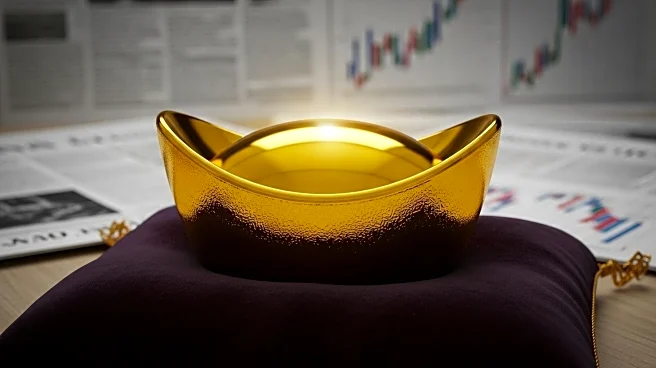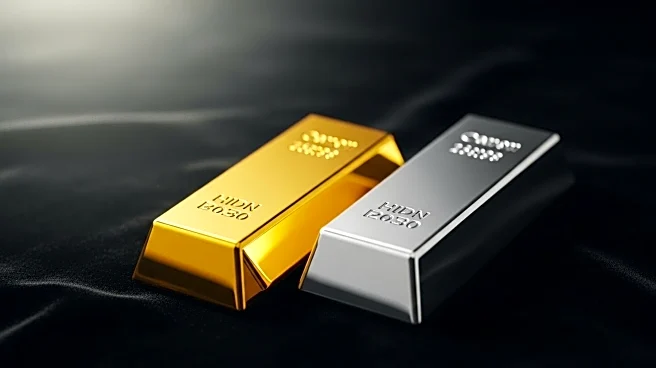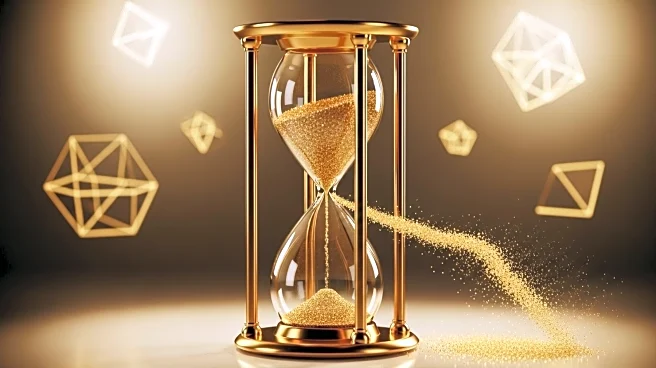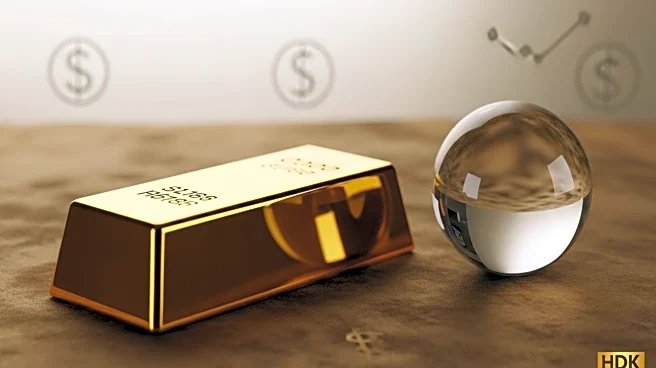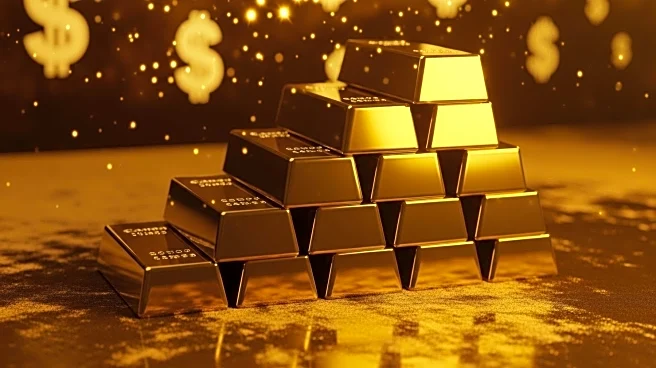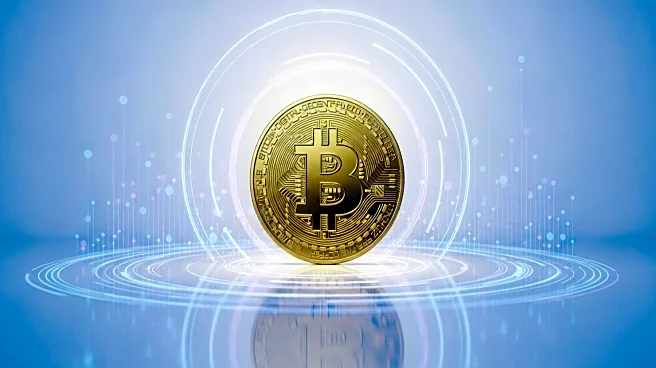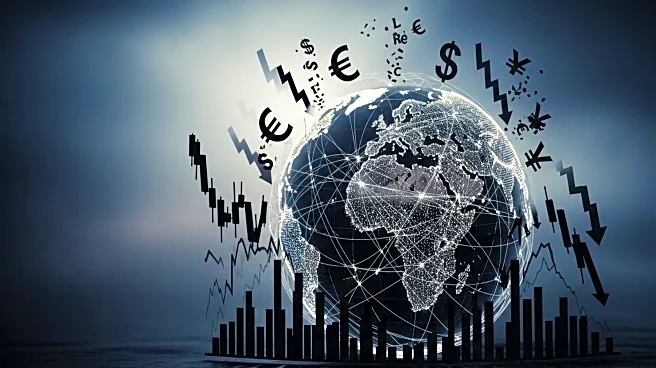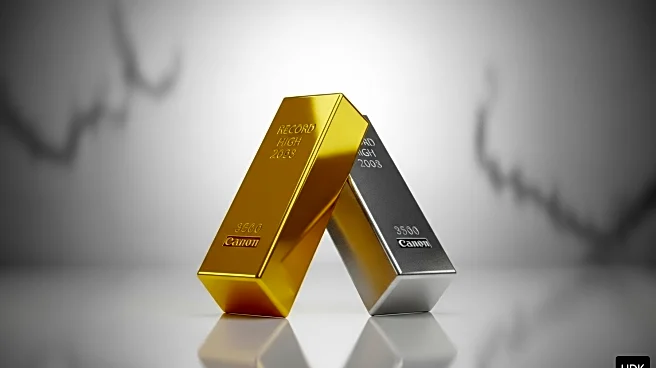What's Happening?
Gold and silver prices have surged significantly amid a U.S. government shutdown, with gold nearing all-time highs at $3,889 per ounce and silver reaching $48 per ounce, its highest since 2011. The shutdown, now in its third day, has created uncertainty, leading investors to seek safe-haven assets. The lack of federal economic data due to the shutdown has further fueled market volatility, with investors relying on alternative indicators that suggest a cooling U.S. economy. This environment has increased expectations for Federal Reserve rate cuts, which typically benefit non-yielding assets like gold and silver. Additionally, global central banks continue to purchase gold, with China and Poland notably increasing their reserves amid geopolitical tensions.
Why It's Important?
The surge in precious metals highlights the market's response to political and economic instability. As the U.S. government shutdown persists, the absence of critical economic data has left investors uncertain, prompting a shift towards assets perceived as safe havens. This trend underscores the broader impact of political dysfunction on financial markets, potentially influencing Federal Reserve policy decisions. A rate cut by the Fed could further boost gold and silver prices, affecting various stakeholders, including investors, mining companies, and central banks. The situation also reflects the ongoing geopolitical tensions that drive nations to bolster their gold reserves as a hedge against economic and political risks.
What's Next?
If the U.S. government shutdown continues, it may exacerbate economic uncertainty, potentially leading to further increases in precious metal prices. The Federal Reserve's upcoming meeting will be closely watched, as any decision to cut interest rates could significantly impact market dynamics. Additionally, geopolitical developments, such as trade disputes and regional conflicts, will likely continue to influence investor behavior and central bank policies. The potential for a resolution to the shutdown or unexpected economic data releases could also alter the current trajectory of precious metal prices.
Beyond the Headlines
The current rally in precious metals may signal a broader shift in investor sentiment towards tangible assets amid rising geopolitical and economic uncertainties. This trend could have long-term implications for global financial markets, as central banks and investors reassess their strategies in response to evolving risks. The increased demand for gold and silver also highlights the potential for these metals to serve as a hedge against inflation and currency devaluation, particularly in a low-interest-rate environment. As such, the ongoing developments may prompt a reevaluation of asset allocation strategies among institutional and retail investors alike.

